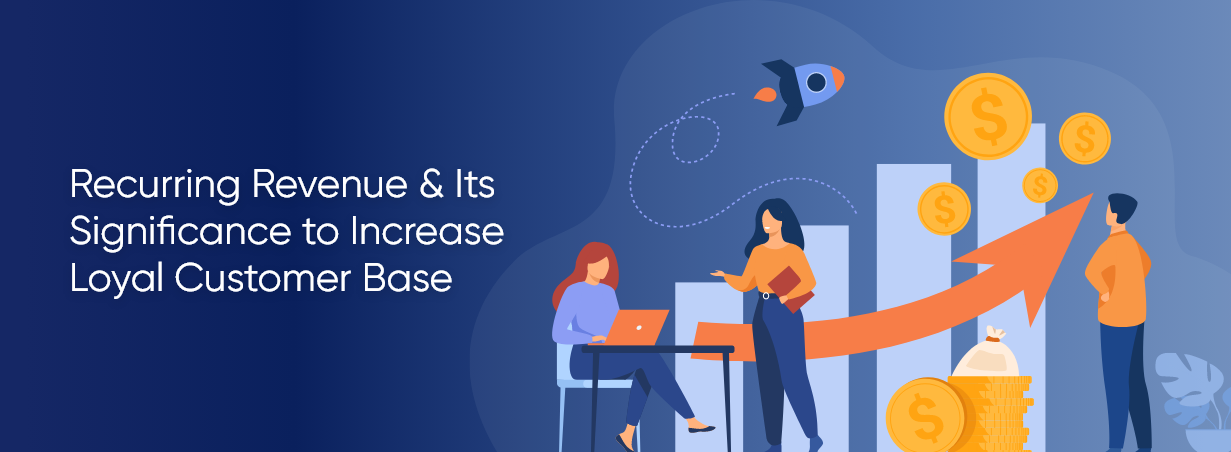Recurring Revenue & Its Significance to Increase Loyal Customer Base
- Posted on November 14, 2022 by Robert
- Reading time about 5 minutes
With the stiff competition in the eCommerce world, getting new customers is always a struggle for many business owners. As we have witnessed a huge rise in acquisition costs, businesses are looking for a smart and scalable way to increase their customer base and boost sales every month.
Recurring revenue business models are used by many brands due to their capability that offers more predictable revenue. However, some brands are not aware of what exactly is recurring revenue and the benefits it can offer. In this blog, we will learn everything you need to know about recurring revenue and how the right eCommerce loyalty programs can help you boost business growth.
Understanding Recurring Revenue and its Benefits to Businesses
Recurring Revenue, as the name says, is a part of the company’s total revenue that is expected to continue every month at regular intervals. This is different from one-time sales but is quite predictable and stable with a high degree of certainty. If we talk about examples of recurring revenue, it can be found in many industry verticals.
Whether it’s membership programs, product subscriptions, or service agreements, these programs offer some type of recurring revenue. After the pandemic, businesses across industries witnessed a huge shift in shopping experiences that enable them to transform and fit into the recurring revenue model.
Here are some of the business types that are best suited for a such business model-
– Content-Type
One of the most successful business types is content-based where they provide access to content digitally or physically. They can take advantage of a recurring revenue model through magazine subscriptions, audio/digital books, news outlets, photo libraries, and streaming services.
– Service-Type
Rather than going for the one-time transaction to make a purchase, service-based businesses will offer access to their platform on the recurring model. For instance, some services offer educational courses and language learning apps.
– Product-Type
For clothing brands or cleaning supplies, product-based recurring revenue models are used by several businesses where customers can subscribe to a variety of products and get them delivered to their doorsteps regularly.
How Can Recurring Revenue Help eCommerce Brands?
Though there is a loyalty program for small businesses and big brands to help increase customer engagement with timely rewards and boost revenue. Making use of recurring revenue streams enables eCommerce businesses to build expected monthly revenue that helps in planning growth more effectively.
Here are some of the ways that show how different brands can benefit from implementing this recurring revenue model-
Accurate Predictability
One of the main advantages of using a recurring revenue model in your business is predictability. Talking about the most common program that offers such a model i.e. subscriptions, this not only offers a reliable and recurring revenue stream but can also enable brands to predict inventory needs.
As businesses are aware of the nature of a subscription business, they can manage their inventory more effectively, enabling them to meet consumer demands by eliminating the risks of overstock and out-of-stock. Predictability help brands to present themselves better in the eyes of potential investors and stakeholders as the businesses that generate recurring revenue are considered to have more stable investment.
Better Cash Flow
Another benefit is cash flow, which can be defined as the amount of money that moves in and out of your business regularly. Cash flows in when customers make purchases and investors put funds into the business. On the other hand, cash flows out when the business spends its budget on resources like marketing, infrastructure, resources, etc.
As a subscription model is recurring in nature, it helps brands to maintain a positive cash flow. With predictable revenue coming to your business after a particular duration, the business can re-invest in upgrading services through product development, marketing, and testing. Also, the positive cash flow enables brands to settle debts and return money to their shareholders on time.
Improved Acquisition Costs
We all know the importance of retaining existing customers rather than keeping the focus on acquiring new ones, which is 5X costlier comparatively. Lowering acquisition costs is one of the top priorities for most marketers in today’s economy.
Brands are now aware that their marketers must put retention strategy first before everything else. If they focus on improving the experience of the existing customer base, they increase their customer lifetime value (CLTV), which is beneficial for improving the return on customer acquisition costs.
Smart Insights
The last advantage of using a recurring revenue model is the insights we get from knowing the customer base effectively. With subscriptions, brands get to know their customers thoroughly as they pick the desired plans that suit their needs.
Customer data gives brands the power to make decisions as per their customer’s needs and deliver personalized experiences, which is effective in the long run for the business and its goals.
Final Thoughts
As we are aware that recurring revenue business models don’t work on a one-time basis and are a part of the revenue that occurs at regular intervals, adding a subscription channel can be a great help to boost recurring revenue. The best thing is you don’t need a huge budget and an in-house web development team to start with subscriptions. Yes, you can straight away start to focus on increasing retention rates.
Novus Loyalty, end-to-end customer loyalty software help businesses get the custom loyalty solution up and running in just a few minutes. Subscriptions not only help focus on building a stronger bond with customers but also help to boost the experience. With robust integration support, you can ensure that your customers ‘experience is seamless as well as interruption free. Brands often struggle to create engagement as customers are going to choose when, where, and how to interact with brands, but we can help you build experiences that can turn into an engagement.



